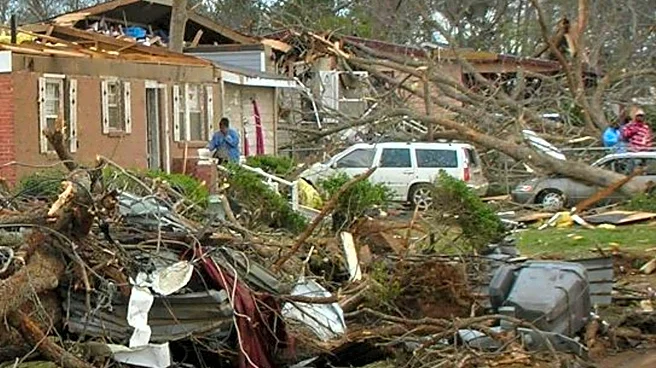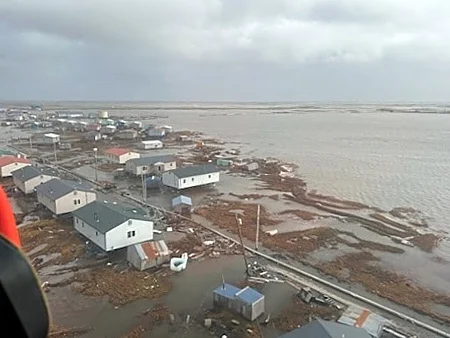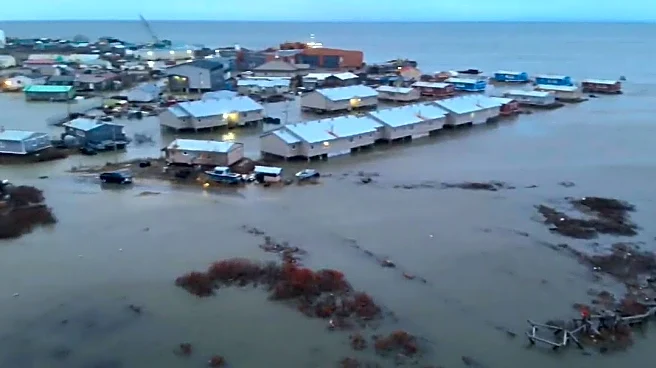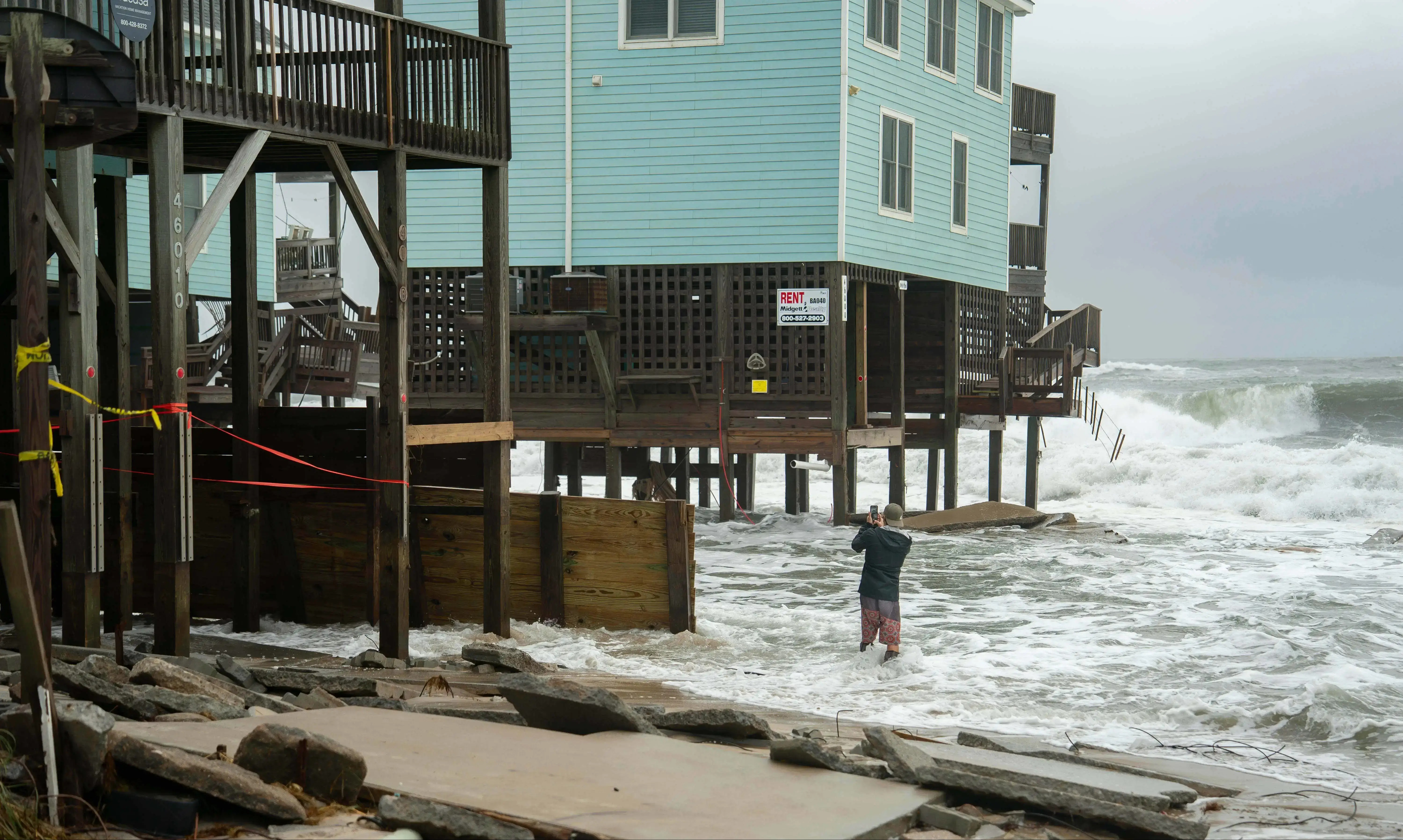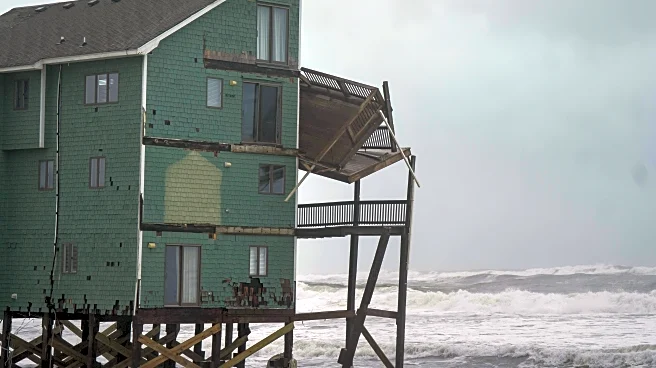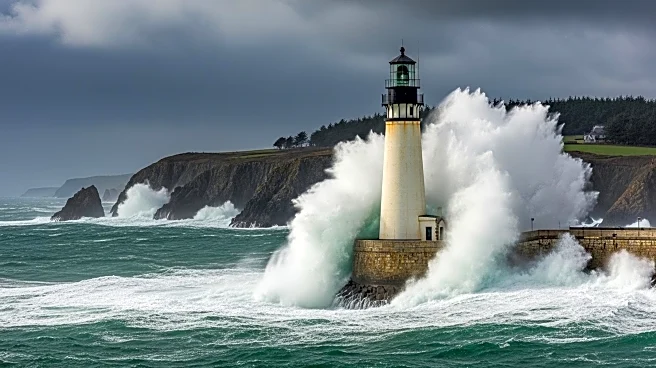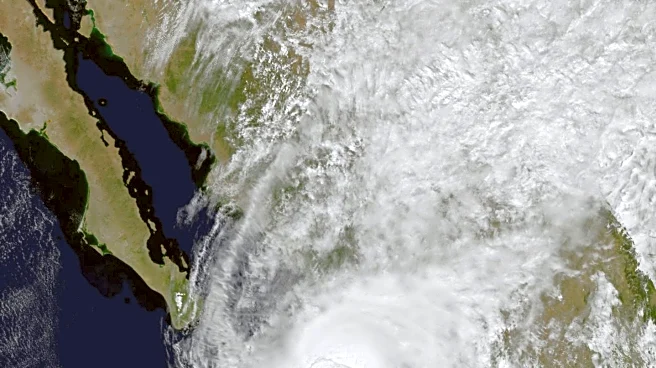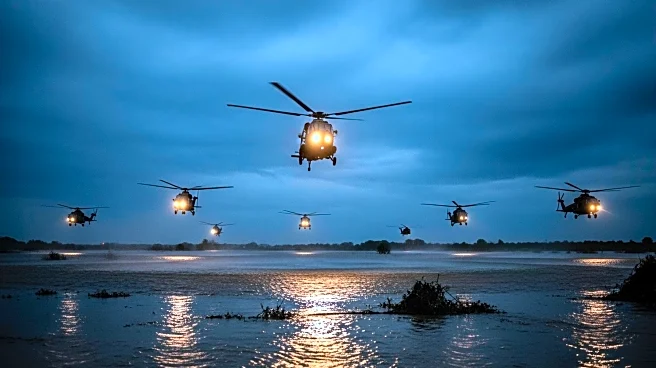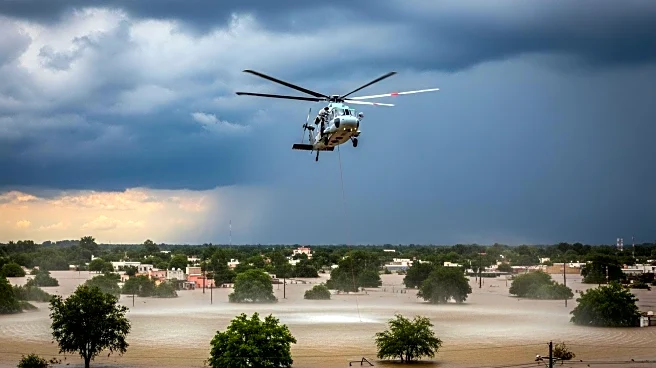What's Happening?
The remnants of Typhoon Halong have caused significant destruction in two Alaskan villages, Kipnuk and Kwigillingok, displacing over 1,500 residents. The storm brought high winds and storm surges, leading
to the destruction of homes and infrastructure. The Coast Guard rescued several individuals from homes that were swept out to sea. Emergency shelters have been set up in schools and the National Guard armory in Bethel, with plans to relocate evacuees to Fairbanks and Anchorage. The affected communities are off the main road system, accessible only by air or water, complicating relief efforts. The storm's impact is exacerbated by the approaching winter, posing challenges for recovery and rebuilding.
Why It's Important?
This disaster highlights the vulnerability of remote Alaskan communities to extreme weather events, which are becoming more frequent and intense due to climate change. The destruction of homes and infrastructure in Kipnuk and Kwigillingok underscores the urgent need for improved disaster preparedness and response strategies in these areas. The displacement of residents and the loss of homes have significant social and economic implications, as communities face long-term recovery challenges. The situation also raises concerns about the adequacy of current emergency management systems and the need for sustainable rebuilding efforts that consider future climate risks.
What's Next?
Authorities are focused on providing immediate relief and shelter to displaced residents, with plans to transport evacuees to longer-term accommodations in Fairbanks and Anchorage. The National Guard is assisting with emergency response, including delivering food, water, and essential supplies. As winter approaches, there is a pressing need to expedite rebuilding efforts and secure adequate housing for affected families. Long-term recovery will require substantial resources and coordination among state and federal agencies, as well as support from local communities. The incident may prompt discussions on enhancing infrastructure resilience and disaster preparedness in remote areas.
Beyond the Headlines
The storm's impact on Indigenous communities in Alaska highlights broader issues of environmental justice and the disproportionate effects of climate change on marginalized populations. These communities often lack the resources and infrastructure to effectively respond to and recover from natural disasters. The situation calls for a reevaluation of policies and investments in climate adaptation and resilience, particularly for vulnerable regions. Additionally, the event may influence future climate policy discussions, emphasizing the need for comprehensive strategies to mitigate the effects of climate change on remote and Indigenous communities.
